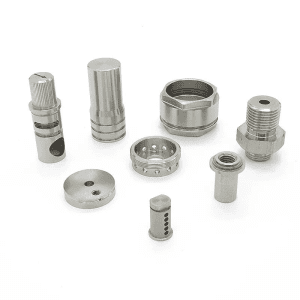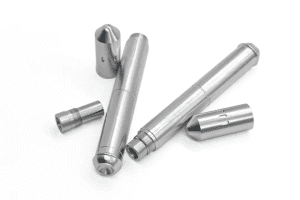In order to improve the processing efficiency and precision of complex special-shaped products, craftsmen have been seeking more efficient and precise processing methods. The emergence of turning and milling composite processing equipment provides an effective solution to improve the processing accuracy and efficiency of aerospace parts.
Processing efficiency and precision are the eternal goals pursued in the field of metal processing.
With the continuous development of CNC technology, computer technology, machine tool technology and processing technology, traditional processing concepts can no longer meet people’s requirements for processing speed, efficiency and accuracy. In this context, composite processing technology emerged as the times require.

Generally speaking, composite processing refers to the general term for processing technologies that can complete different processes or different process methods on one processing equipment. Composite processing technology mainly presents two different types. One is the composite of different processing methods based on energy or movement mode; the other is the composite based on the principle of process concentration and mainly mechanical processing technology. Turning and milling combined processing is one of the most rapidly developing processing methods in this field in recent years.
Aviation product parts are characterized by multiple varieties, small batches, complex processes, and widespread use of overall thin-walled structures and difficult-to-process materials. Therefore, long manufacturing cycles, large amounts of material removal, low processing efficiency, and serious processing deformations are common in the manufacturing process. bottleneck. In order to improve the processing efficiency and precision of complex aviation products, craftsmen have been seeking more efficient and precise processing methods. The emergence of turning and milling composite processing equipment provides an effective solution to improve the processing accuracy and efficiency of aerospace parts.

Processing advantages:
(1) Shorten the product manufacturing process chain and improve production efficiency. A variety of special tools can be installed, and new tool arrangements can reduce tool changing time and improve processing efficiency. Turning and milling combined processing can complete all or most of the processing procedures in one clamping, thus greatly shortening the product manufacturing process chain. This not only reduces the production auxiliary time caused by changes in fixture installation, but also reduces the tooling fixture manufacturing cycle and waiting time, which can significantly improve production efficiency.
(2) Reduce the number of clamping times and improve processing accuracy. The reduction in the number of card installations avoids the accumulation of errors caused by positioning reference conversion. At the same time, most turning and milling composite processing equipment have online detection functions, which can realize on-site detection and precision control of key data in the manufacturing process, thereby improving the processing accuracy of products; the high-strength integrated bed design improves the processing of difficult-to-cut materials. The gravity processing capability; the machine tool is equipped with an automatic feeding device, which can realize automatic feeding and continuous operation, basically realizing the assembly line operation of a single machine tool.
3) Reduce the floor space and production costs. The compact and beautiful appearance design improves space utilization, makes maintenance and repair more convenient, and provides customers with maximum satisfaction. Although the price of a single unit of turning and milling composite processing equipment is relatively high, due to the shortening of the manufacturing process chain and the reduction of equipment required for the product , as well as the reduction in the number of tooling fixtures, workshop floor space and equipment maintenance costs, can effectively reduce the overall fixed asset investment, production operation and management costs.


